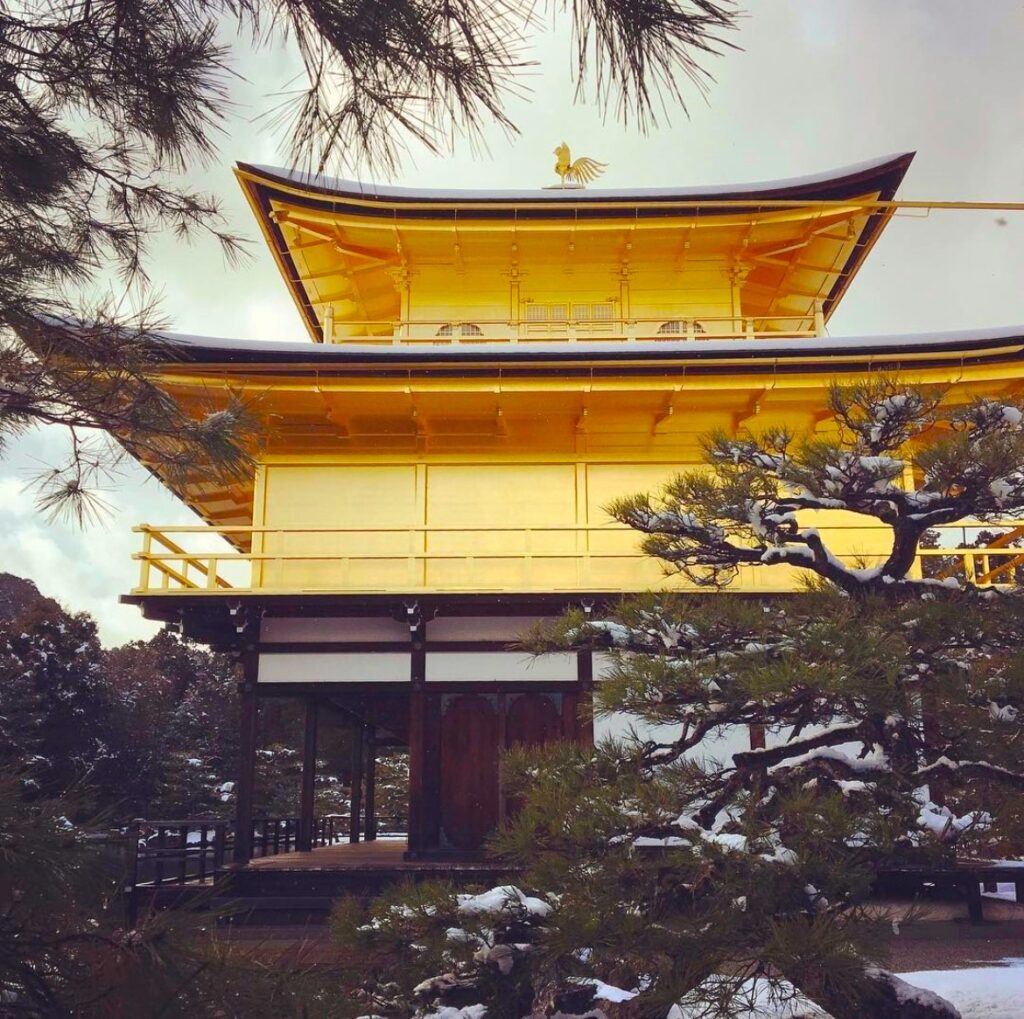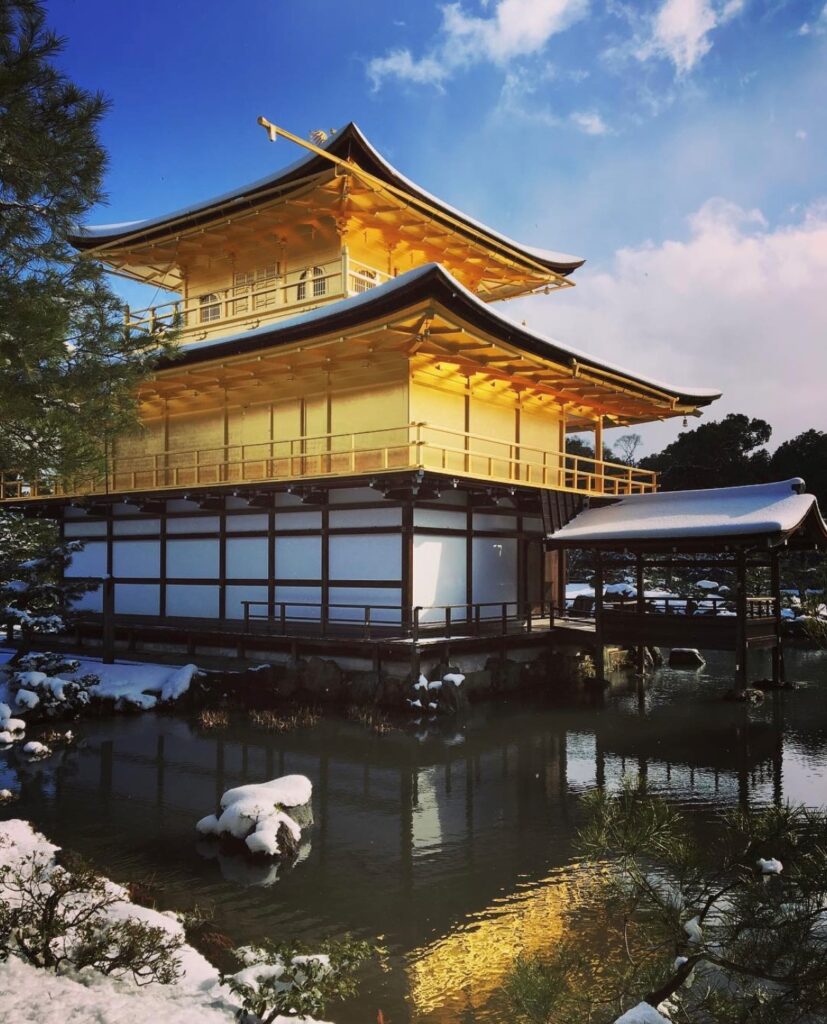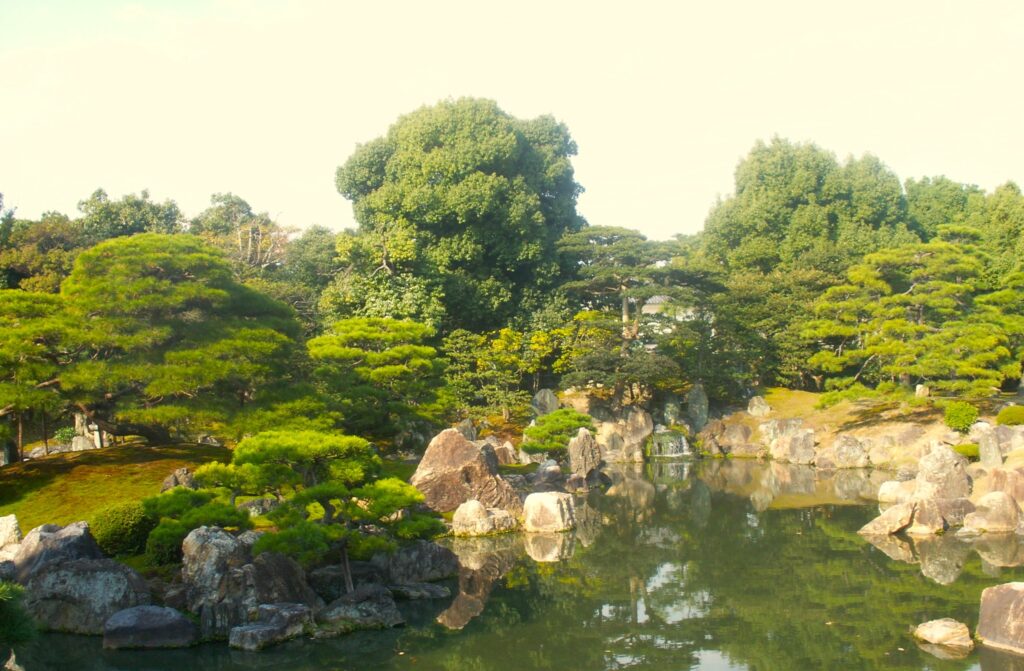SAMURAI BUILD 2F,
1-29 Katori-cho, Nakamura-ku,
Nagoya, Aichi Prefecture, Japan
MESMERIZING KINKAKU-JI: “The Temple of the Golden Pavilion”

Kinkaku-ji (金閣寺) is a UNESCO World Heritage Site and (also known as Rokuon-ji) is one of the most popular landmark symbolizing Kyoto. It is beautiful in each season, literally a “touch of gold” among the pink shades of cherry blossoms in spring, the warm red leaves in autumn as well as the bright greenery in summer. In winter, a snow blanket covers Kinkaku-ji and its surroundings offering an amazing magical scenery just like a “winter wonderland”.

History
Yoshimitsu Ashikaga was the third shogun of the Ashikaga Shogunate and he built the Kinkaku-ji in 1397 as his own personal villa. The shining Kinkaku-ji perfectly reflects Yoshimitsu Ashikaga`s extravagant and dynamic personality. After his death, the villa was transformed into a Zen temple of the Rinzai School (one of two major Zen Buddhist sects in Japan) and it was named Rokuon-ji.

Source: Wikipedia
The present building is a replica dating back to 1955 because, unfortunately, Kinkaku-ji has been destroyed several times by fire throughout its history: two times during Onin War, a civil war lasted from 1467 to 1477 that almost destroyed Kyoto and on 2nd July 1950 when a young Buddhist monk, Shoken Hayashi, deliberately set Kinkaku-ji on fire for “hatred of beauty”.
Structure

Kinkaku-ji is a magnificent three-story building whose top two floors are completely covered in gold leaf (Kanazawa boasts the 99% of Japan’s gold leaf production) which earned its name Kinkaku-ji, “Kin” means gold in Japanese.
The gold leaf reflect beautifully and pictoresquely in the water of Kyoko-chi, also called “mirror pond”, a large artificial lake.
Kinkaku-ji is a three-story building, the third floor is topped with a bronze phoenix ornament and each floor is built in a different style:
–First floor: “Shinden style” (Wood) > Residential style of the Imperial Heian aristocracy
–Second floor: “Buke style” (Gold) > Samurai houses style
–Third floor: “Buddhist style” (Gold) > Chinese Zen hall style


In the pond there are 10 small islands and the largest ones represent Japan. Each bridge, rock composition, tree, waterfall and plant is arranged in a specific way and the whole layout is typical of the “Shinden style” representing the harmony between Heaven and Earth.
The garden is an iconic example of a Japanese strolling garden of the Muromachi period. The path leads around the pond, offering amazing glimpses and different points of view of Kinkaku-ji. The trail ends at the Sekkatei Teahouse but you want to enjoy more the tranquil atmosphere, you can stop at the tea garden for some matcha-tea and wagashi (Japanese traditional confectionery).

Unfortuntely, it is not possible to visit the inside Kinkaku-ji. However, if you look closely you can see the statue of Buddha and Yoshimitsu on the first floor from across the pond because the doors are usually opened.
The rise of Samurai and the twilight of the Imperial Order
Yoshimitsu, in order to express the fact that Samurai gained more power and were not the subordinates of the Court nobles anymore, decided to set the “Shinden” imperial style floor under the “Buke” samurai style one without covering it in gold leaves. Moreover, the “Buddhist style” floor is on the top because Yoshimitsu was himself a priest.
Furthermore, the largest islands in the pond representing Japan mean that Yoshimitsu, as the most powerful shogun of the Ashikaga Shogunate, had the control of the whole Japan at that time.
Kinkaku-ji in the Japanese Literature

(Yukio Mishima) published in 1956
Source: Wikipedia
“Kinkaku-ji” is so aesthetically beautiful so that it was title of the novel of Yukio Mishima (1925-1970) one of Japan`s greatest writer.
His novel is based on the previously mentioned “Kinkaku-ji arsen case” when the Buddhist monk, Shoken Hayashi literally got obsessed with the beauty of Kinkaku-ji that decided to set it on fire on 1950 and then confessed his guilt.
- category: Kyoto







